
The Historic Fort Amsterdam of Sint Maarten
Explore Fort Amsterdam in Sint Maarten: A historical gem offering panoramic views, rich colonial history, and a haven for birdwatchers.
Fort Amsterdam stands as a testament to the rich history and strategic importance of Sint Maarten. Originally built by the Dutch in 1631, this fortification offers a glimpse into the colonial past and the various powers that contested for control over the island. Perched on a peninsula between Great Bay and Little Bay, the fort provides breathtaking panoramic views of the Caribbean Sea. These vistas make it a perfect spot for photography and quiet reflection. Beyond its scenic beauty, Fort Amsterdam is an ideal destination for history buffs. Walking through the ruins, you can almost hear the echoes of the past. Information plaques scattered around the site provide context and details about the battles and events that took place here. The fort also houses an old cannon, which remains as a silent guardian of the island's storied past. For nature lovers, Fort Amsterdam offers more than just history. The area surrounding the fort is a sanctuary for brown pelicans, making it a wonderful place for birdwatching. The combination of historical intrigue and natural beauty makes Fort Amsterdam a unique and enriching experience for all types of travelers.
Local tips in Fort Amsterdam
- Visit early in the morning to avoid the midday heat and to enjoy the fort with fewer tourists.
- Wear comfortable walking shoes as the terrain around the fort can be uneven.
- Bring a pair of binoculars if you are interested in birdwatching, especially for spotting brown pelicans.
- Read the information plaques scattered around the site for a richer understanding of the fort's history.
- Carry water and snacks as there are limited facilities nearby.
The Historic Fort Amsterdam of Sint Maarten
Fort Amsterdam stands as a testament to the rich history and strategic importance of Sint Maarten. Originally built by the Dutch in 1631, this fortification offers a glimpse into the colonial past and the various powers that contested for control over the island. Perched on a peninsula between Great Bay and Little Bay, the fort provides breathtaking panoramic views of the Caribbean Sea. These vistas make it a perfect spot for photography and quiet reflection. Beyond its scenic beauty, Fort Amsterdam is an ideal destination for history buffs. Walking through the ruins, you can almost hear the echoes of the past. Information plaques scattered around the site provide context and details about the battles and events that took place here. The fort also houses an old cannon, which remains as a silent guardian of the island's storied past. For nature lovers, Fort Amsterdam offers more than just history. The area surrounding the fort is a sanctuary for brown pelicans, making it a wonderful place for birdwatching. The combination of historical intrigue and natural beauty makes Fort Amsterdam a unique and enriching experience for all types of travelers.
When is the best time to go to Fort Amsterdam?
Essential places to dine
Palapa Hidden Oasis SXM
Experience the perfect blend of relaxation and exquisite dining at Palapa Hidden Oasis SXM in Simpson Bay, Sint Maarten.
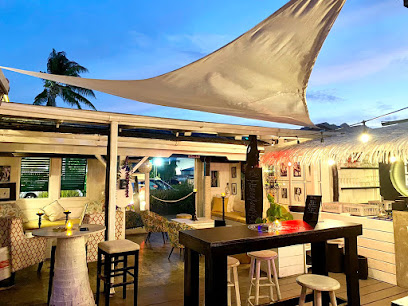
Dutch Blonde Beach Bar & Restaurant
Savor exquisite Western cuisine while enjoying breathtaking ocean views at Dutch Blonde Beach Bar & Restaurant in Philipsburg.

Ocean Lounge @ Holland House
Experience exquisite Caribbean dining at Ocean Lounge in Philipsburg with stunning ocean views and vibrant ambiance.
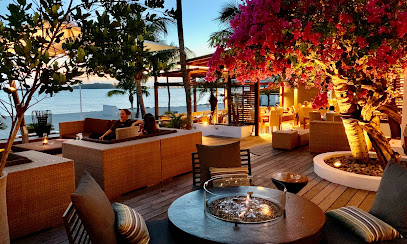
Caribbean Blend
Discover authentic Caribbean flavors at Caribbean Blend in Philipsburg – where every dish tells a story and every bite transports you to paradise.

The Fresh Shawarma Man
Experience authentic Middle Eastern flavors at The Fresh Shawarma Man in Sint Maarten - where every bite is a taste of paradise.

Biggy's Central
Savor the flavors of Sint Maarten at Biggy's Central - where local meets international cuisine in a vibrant setting.
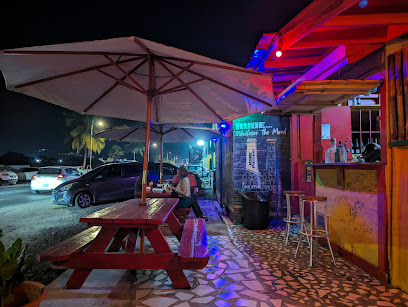
The Jerk & Roti Hut
Discover authentic Caribbean flavors at The Jerk & Roti Hut, where every dish tells a story of spice and tradition.

Oasis Food & Drinks
Experience delightful flavors at Oasis Food & Drinks in Philipsburg - where local meets international cuisine in a cozy atmosphere.

Chez Delphine
Experience authentic French cuisine at Chez Delphine in Philipsburg—where culinary tradition meets Caribbean charm.

Cindy’s Roti & Local Food
Discover the essence of Caribbean cuisine at Cindy’s Roti & Local Food in Philipsburg, where every dish tells a flavorful story.
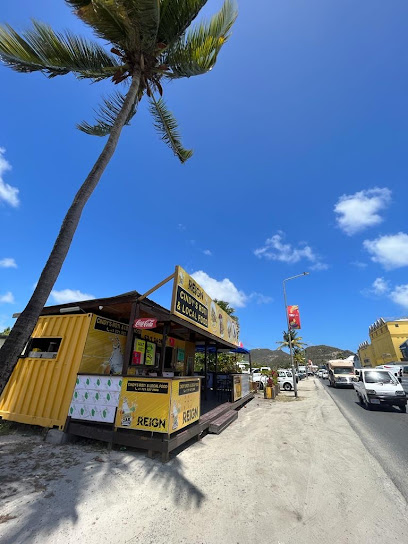
The Love Boat SXM
Experience authentic French cuisine at The Love Boat SXM in Philipsburg—where exquisite flavors meet Caribbean charm.

The Pier
Discover exquisite dining at The Pier in Philipsburg, where fresh seafood meets breathtaking waterfront views in an unforgettable culinary experience.

Eat Something
Discover delicious seafood dishes at 'Eat Something', where Caribbean flavors meet fresh local catches in Philipsburg.

Pureocean Beachside Dining.
Discover Pureocean Beachside Dining: Where exquisite cuisine meets breathtaking ocean views in beautiful Sint Maarten.

Caribbean Blue
Experience authentic Caribbean cuisine at Caribbean Blue in Philipsburg, Sint Maarten - where flavor meets breathtaking ocean views.

Markets, malls and hidden boutiques
Amsterdam Cheese And Liquor Store
Discover the delightful flavors of Dutch cheeses and liquors at Amsterdam Cheese and Liquor Store in Philipsburg, Sint Maarten.

Shop-4-Less Plus
Explore creativity at Shop-4-Less Plus in Little Bay, Sint Maarten – your go-to destination for crafting supplies and unique souvenirs.

Penha Duty Free St. Maarten at Frontstreet
Discover luxury at Penha Duty Free in St. Maarten, offering exclusive perfumes, cosmetics, liquor, and tobacco at unbeatable duty-free prices.

Omega Boutique - St. Maarten
Explore luxury timepieces at Omega Boutique in St. Maarten, where elegance meets exquisite craftsmanship in a stunning waterfront setting.

A&A Scents n More
Explore a world of beauty at A&A Scents n More, the ultimate destination for health and beauty products in the region.

Cariloha del sol
Explore eco-friendly gifts made from bamboo at Cariloha del Sol in Philipsburg, Sint Maarten – your source for sustainable souvenirs.

Camille Sewing & Boutique
Discover the charm of Caribbean fashion at Camille Sewing & Boutique, where unique, locally crafted clothing awaits in Philipsburg, Sint Maarten.

Rima St Maarten
Discover unique souvenirs and local crafts at Rima St Maarten, the ultimate gift shop in Philipsburg offering authentic island treasures.

Pirana Joe St. Maarten Official Store
Discover the essence of St. Maarten at Pirana Joe, your go-to gift shop for beachwear, collectibles, and unique souvenirs.

Shoppers Stop St.Maarten
Discover unique Caribbean treasures at Shoppers Stop St. Maarten, your go-to souvenir store in Philipsburg for handcrafted gifts and local artistry.
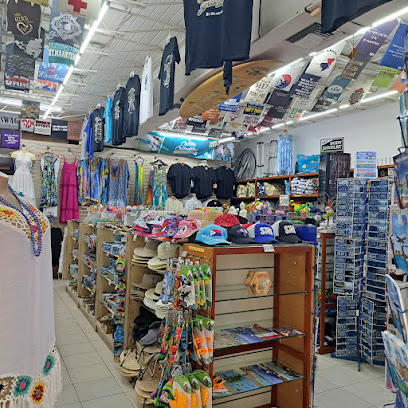
TOP SHOP
Discover unique souvenirs and local crafts at TOP SHOP, the premier gift shop in Philipsburg, Sint Maarten, for every traveler.

Divi Mini Market
Explore the Caribbean charm at Divi Mini Market in Fort Amsterdam, where local goods and essentials await every traveler.

Little Europe Building Sint Maarten
Explore the vibrant shopping scene at Little Europe Building in Philipsburg, Sint Maarten, where unique jewelry and local treasures await.

SXM POSH ONLINE BOUTIQUE
Explore SXM Posh Online Boutique for unique local fashion and handcrafted treasures that embody the spirit of St. Maarten.

Lalu's
Discover unique souvenirs and local crafts at Lalu's, Philipsburg's premier gift shop that embodies the spirit of Sint Maarten.

Essential bars & hidden hideouts
Driftwood Boat Bar
Discover Driftwood Boat Bar, a vibrant waterfront bar in Simpson Bay, Sint Maarten, known for its delicious cocktails, fresh seafood, and lively atmosphere.
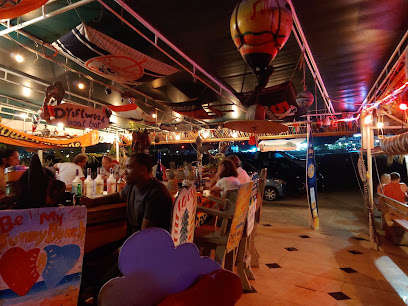
Lazy Lizard Restaurant & Craft Bar
Experience the vibrant flavors and laid-back atmosphere of Lazy Lizard Restaurant & Craft Bar in Philipsburg, Sint Maarten.

Layback Beach Bar & Grill
Discover the perfect blend of relaxation and delicious cuisine at Layback Beach Bar & Grill in Philipsburg, Sint Maarten.

Dutch Blonde Beach Bar & Restaurant
Experience the vibrant flavors and breathtaking views at Dutch Blonde Beach Bar & Restaurant in Philipsburg, Sint Maarten.

Ocean Lounge @ Holland House
Experience the best of Caribbean dining at Ocean Lounge in Philipsburg, where exquisite seafood meets stunning ocean views.

Cafe Rembrandt
Discover Cafe Rembrandt, the ultimate sports bar in Sint Maarten, offering delicious food, refreshing drinks, and a vibrant atmosphere for all sports fans.
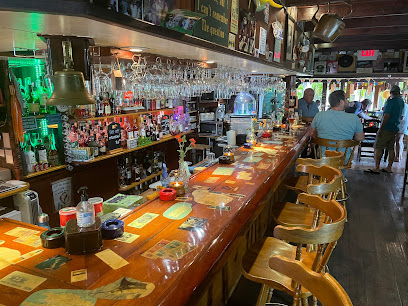
Dirty Sanchez Crew Bar
Discover the lively atmosphere and delicious cocktails at Dirty Sanchez Crew Bar in Philipsburg, the ultimate tropical escape for tourists.

Big Bastaard's Beach Bar
Experience the ultimate Caribbean relaxation at Big Bastaard's Beach Bar with stunning views, delicious food, and vibrant local culture.
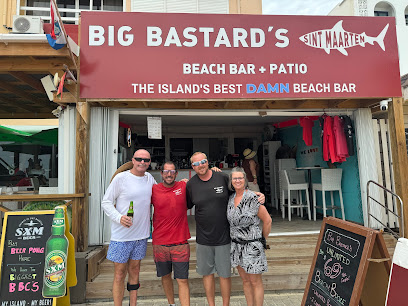
Juggie's Place
Discover the vibrant atmosphere of Juggie's Place in Philipsburg, where delightful drinks and friendly service await every visitor.
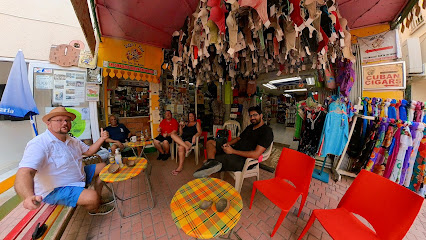
Lizzy's Beach Bar
Discover the vibrant atmosphere and delicious cuisine of Lizzy's Beach Bar, your perfect getaway in Philipsburg, Sint Maarten.

Nu Love Beach Bar
Discover the essence of Caribbean dining at Nu Love Beach Bar, where scrumptious food meets breathtaking ocean views in Philipsburg.

LUXBAR SXM
Experience the vibrant atmosphere and exquisite cocktails at LUXBAR SXM in Philipsburg, the perfect Caribbean getaway.

Gizmos Bar And Grill
Experience the flavors of Sint Maarten at Gizmos Bar And Grill, where great food meets a vibrant atmosphere in Fort Amsterdam.

Hon Hon Hon Bar & Restaurant
Discover Caribbean flavors at Hon Hon Hon Bar & Restaurant, the ultimate dining destination on Philipsburg's beautiful Boardwalk.

Thirsty Pirate
Discover the vibrant atmosphere of Thirsty Pirate, Philipsburg's favorite bar for tropical drinks and laid-back Caribbean vibes.

Local Phrases about Fort Amsterdam
-
- HelloBonjour
[bon-zhoor] - GoodbyeAu revoir
[oh re-vwahr] - YesOui
[wee] - NoNon
[non] - Please/You're welcomeS'il vous plaît
[seel voo pleh] - Thank youMerci
[mehr-see] - Excuse me/SorryExcusez-moi
[ex-kew-zay mwa] - How are you?Comment ça va?
[kom-mohn sah vah] - Fine. And you?Bien. Et toi?
[byen. ay twah] - Do you speak English?Parlez-vous anglais?
[par-leh voo ahn-glay] - I don't understandJe ne comprends pas
[zhuh nuh kohm-prahnd pah]
- HelloBonjour
-
- I'd like to see the menu, pleaseJe voudrais voir le menu, s'il vous plaît
[zhuh voo-dray vwahr luh meh-nyoo, seel voo pleh] - I don't eat meatJe ne mange pas de viande
[zhuh nuh mahnj pah duh vee-ahnd] - Cheers!Santé!
[sahn-tay] - I would like to pay, pleaseJe voudrais payer, s'il vous plaît
[zhuh voo-dray pay-ay, seel voo pleh]
- I'd like to see the menu, pleaseJe voudrais voir le menu, s'il vous plaît
-
- Help!Au secours!
[oh seh-koor] - Go away!Allez-vous en!
[ah-lay vooz ahn] - Call the Police!Appelez la police!
[ah-peh-lay lah po-lees] - Call a doctor!Appelez un médecin!
[ah-peh-lay uh mayd-sahn] - I'm lostJe suis perdu(e)
[zhuh swee pair-doo] - I'm illJe suis malade
[zhuh swee mah-lahd]
- Help!Au secours!
-
- I'd like to buy...Je voudrais acheter...
[zhuh voo-dray ash-tay] - I'm just lookingJe regarde juste
[zhuh ruh-gard zhuhst] - How much is it?Combien ça coûte?
[kohm-byen sah koot] - That's too expensiveC'est trop cher
[say troh shair] - Can you lower the price?Pouvez-vous baisser le prix?
[poo-veh voo bay-say luh pree]
- I'd like to buy...Je voudrais acheter...
-
- What time is it?Quelle heure est-il?
[kell uhr ay-teel] - It's one o'clockIl est une heure
[eel ay zewn uhr] - Half past (10)Dix heures et demie
[deez uhr ay duh-mee] - MorningMatin
[mah-tahn] - AfternoonAprès-midi
[ah-pray mee-dee] - EveningSoir
[swahr] - YesterdayHier
[yehr] - TodayAujourd'hui
[oh-zhoor dewee] - TomorrowDemain
[duh-mahn] - 1Un
[uhn] - 2Deux
[duh] - 3Trois
[twah] - 4Quatre
[katr] - 5Cinq
[sank] - 6Six
[sees] - 7Sept
[set] - 8Huit
[weet] - 9Neuf
[nuf] - 10Dix
[deez]
- What time is it?Quelle heure est-il?
-
- Where's a/the...?Où est...?
[ooh ay] - What's the address?Quelle est l'adresse?
[kell ay la-dress] - Can you show me (on the map)?Pouvez-vous me montrer (sur la carte)?
[poo-veh voo muh mohn-tray (soor lah kart)] - When's the next (bus)?Quand est le prochain (bus)?
[kahn ay luh proh-shahn (bus)] - A ticket (to ....)Un billet (pour ....)
[uhn bee-yay (poor)]
- Where's a/the...?Où est...?
History of Fort Amsterdam
-
Fort Amsterdam was established in 1631 by the Dutch West India Company to protect their valuable salt trade routes. It was the first fortification built by the Dutch in the Caribbean. The fort was strategically located on the peninsula on the southern side of the Great Bay in Sint Maarten, offering a commanding view of both the bay and the Caribbean Sea.
-
In 1633, just two years after its establishment, Fort Amsterdam was captured by Spanish forces led by Captain Francisco de Toledo. The Spanish aimed to control the lucrative salt trade and used the fort as a base to launch attacks on other Dutch territories in the Caribbean. The fort remained under Spanish control until 1648, when it was returned to the Dutch under the Treaty of Westphalia.
-
After regaining control, the Dutch focused on fortifying and expanding Fort Amsterdam to better withstand future attacks. The fort was rebuilt using stronger materials, and additional cannons were installed to enhance its defensive capabilities. These upgrades were crucial in maintaining Dutch control over the area and protecting their economic interests.
-
During the late 17th and early 18th centuries, Fort Amsterdam played a key role in defending against pirate threats and smuggling activities. The fort's strategic location made it a prime target for pirates looking to disrupt trade routes. Despite these challenges, the Dutch managed to maintain control, largely due to the fort's formidable defenses and the vigilance of its garrison.
-
By the 19th century, the strategic importance of Fort Amsterdam began to wane as new trade routes and technologies emerged. The fort was gradually abandoned and fell into disrepair. However, its historical significance was recognized, and efforts were made to preserve its ruins as a cultural heritage site. Today, Fort Amsterdam stands as a testament to the island's turbulent history and its role in the larger narrative of Caribbean colonialism.
-
Today, Fort Amsterdam is a popular tourist destination and a symbol of Sint Maarten's rich cultural heritage. Visitors can explore the ruins, which include remnants of the original walls, cannons, and other historical artifacts. The site also offers stunning panoramic views of the Great Bay and the Caribbean Sea, providing a unique blend of natural beauty and historical intrigue.
Fort Amsterdam Essentials
-
Fort Amsterdam is located in Philipsburg, the capital of Sint Maarten. The nearest airport is Princess Juliana International Airport (SXM), which is approximately 10 kilometers away. From the airport, you can take a taxi or rent a car to reach Philipsburg. Alternatively, there are public buses and shuttle services available that can take you to Philipsburg and other parts of the island.
-
Once in Philipsburg, getting to Fort Amsterdam is straightforward. You can take a taxi or use local buses that run frequently. Renting a car is also a popular option for tourists who wish to explore the island at their own pace. Biking and walking are feasible for shorter distances and offer a more intimate way to explore the local scenery.
-
The official currency in Sint Maarten is the Netherlands Antillean Guilder (ANG), although the US dollar (USD) is widely accepted. Credit cards are commonly used in hotels, restaurants, and shops. ATMs are readily available in Philipsburg and other major areas, but it is advisable to carry some cash, especially when visiting smaller establishments or rural parts of the island.
-
Fort Amsterdam and Philipsburg are generally safe for tourists, but it is always wise to take standard precautions. Avoid walking alone at night in less populated areas and be cautious of your belongings, especially in crowded places like markets. Be aware of pickpockets and petty theft, which can occur in tourist-heavy areas.
-
In case of an emergency, dial 911 for immediate assistance. There are medical facilities and pharmacies available in Philipsburg. It is recommended to have travel insurance that covers medical emergencies. For minor health issues, local pharmacies can provide over-the-counter medications.
-
Fashion: Do dress comfortably and consider the tropical climate; lightweight and breathable fabrics are recommended. Avoid overly revealing clothing in public areas. Religion: Do respect local customs and dress modestly when visiting religious sites. Public Transport: Do use public transport respectfully and be prepared to give up your seat for elderly passengers. Don’t eat or drink on public transport. Greetings: Do greet locals with a friendly 'hello' or 'bonjour,' reflecting the island's Dutch and French influences. Eating & Drinking: Do try local delicacies and seafood. Don’t refuse hospitality; it is considered impolite.
-
To experience Fort Amsterdam like a local, visit during the early morning or late afternoon to avoid the heat and crowds. Take a guided tour to learn about the rich history of the fort and its strategic importance. Engage with local vendors and try authentic Sint Maarten cuisine at nearby eateries. Don’t miss the stunning views of Great Bay and the surrounding areas from the fort's vantage points.
Nearby Cities to Fort Amsterdam
-
Things To Do in Sint Peters
-
Things To Do in Maho
-
Things To Do in Lowlands
-
Things To Do in Blowing Point Village
-
Things To Do in South Hill
-
Things To Do in West End Village
-
Things To Do in George Hill
-
Things To Do in Long Bay Village
-
Things To Do in Sandy Ground Village
-
Things To Do in North Hill Village
-
Things To Do in East End Village
-
Things To Do in Shoal Bay Village
-
Things To Do in Island Harbour
-
Things To Do in Dieppe Bay Town
-
Things To Do in Sandy Point Town







